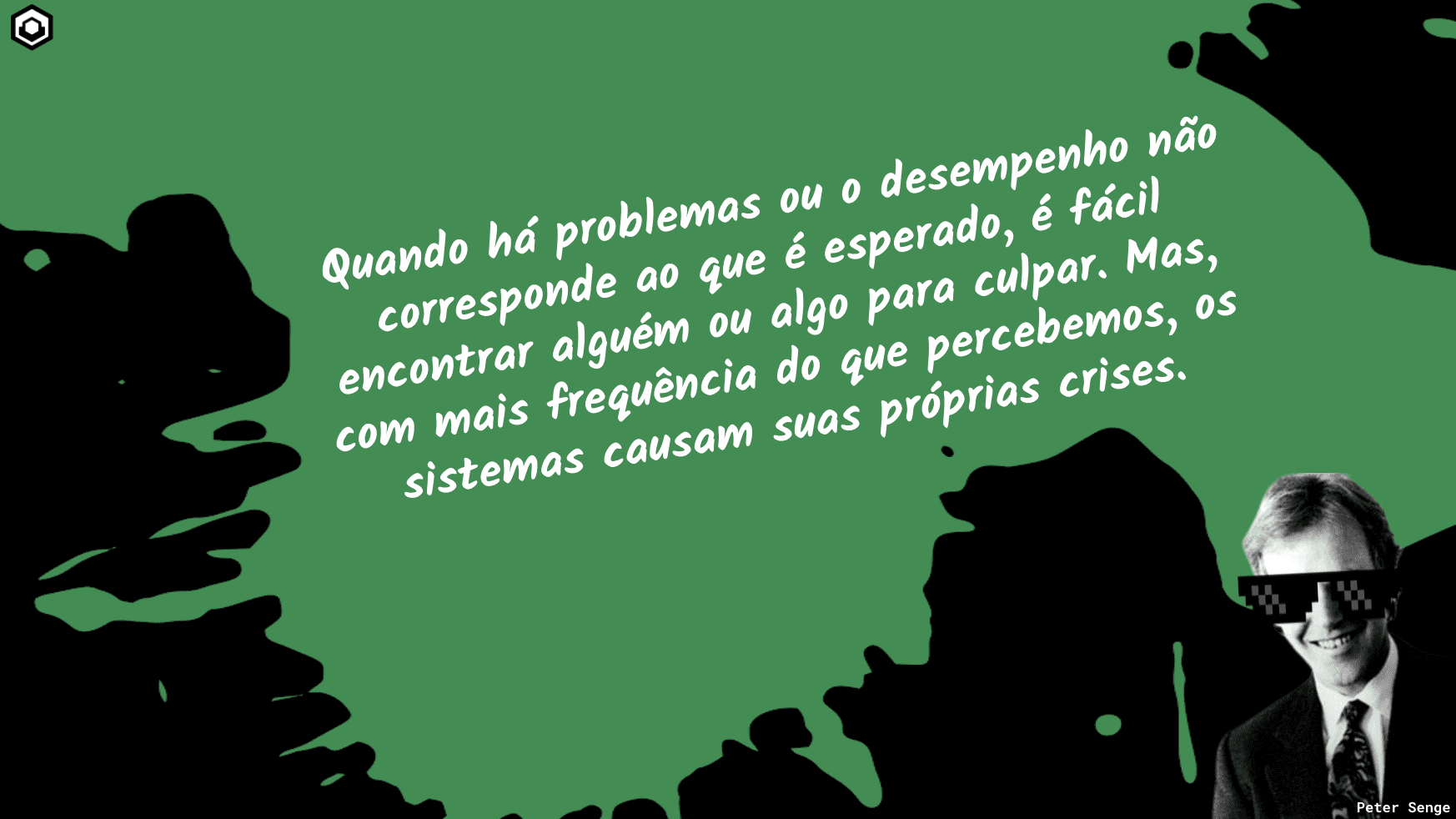Have you ever wondered why different people working in the same positions seem to behave similarly?
Let’s take a look at a common Brazilian stereotype, the Brazilian police in their interactions with black people. Obviously this is limited to a Brazilian context, but it provides us with an example to help us explore the matter further. So what could explain why so many different police officers act violently towards these individuals? Automatically judging them as criminals?
A slightly easier example might be the issue of students seeking loopholes in the school system to “cheat” and getting a good grade without necessarily having to study. Why does this happen? Are all these students simply cheaters by nature?
What do the issues of police abusing power against black people and cheating students have in common?
And what the heck does all of this have to do with organizational design?
The answer I bring here is not obvious and certainly not sufficient enough. But it’s a start.
“When looking at social structures from a systemic perspective, we try to understand how the various elements of the system interact and ultimately influence the behavior of individuals and perhaps even society as a whole.”
You’ve probably heard of structural racism, for example. Well, that’s it.
Basically, what I want to say is that, although people have autonomy to act as they see fit, they are highly influenced by the structures of the systems they inhabit. That is, structure influences behavior. Therefore, the racist police officer is reproducing behavior extolled by a system that oppresses Black people in countless ways. The cheating student is playing by the rules of an educational system that prepares students to pass tests and not to learn about life and how all those subjects are relevant.
But what is this “structure” that I refer to?
If you think I’m talking about the organizational structure that is described by the organizational chart, it’s not.
The “structure” is everything that influences our decisions and, consequently, our behavior.
Procedures, rules, operational manuals, instructions on how to make reports and the type of information they must contain, workspace architecture, logistics, symbols, rituals, objects, roles…
Even those “informal” or unwritten rules end up conditioning people’s behavior within social systems.
We tend to think of “structure” as external constraints on individuals.
But what we call structure here deals with the basic relations that influence human behavior. In social systems, structure includes how people make decisions – the “operational policies” by which we translate perceptions, objectives, rules, and norms.
Still think it’s abstract? Well consider this – what’s your organization’s “dress code”, the management model (is it hierarchical or distributed), how are the meetings, how is performance evaluated, in short, all of this is a reflection of the structure of the social system that you inhabit.
Why is it that even with so many workshops and training sessions that promise to change people’s mindset and completely transform organizations, the so-called change never happens?
Well, I start from the premise that if we want to change behavior in an organization, we should avoid simplistic solutions focused on “development goals”, “mindset change”, and “workshops and training” that promise to transform the culture without any structural intervention.
We need to identify the causes that motivate certain behaviors, understand how they relate, and redesign the structure of the system so that the desired behavior becomes viable.
It’s no use wanting people to be more “autonomous” if the structure does not create space for this to be possible.”
Do not blame the people or the system
When there are problems or performance doesn’t correspond with expectations, it’s easy to find someone or something to blame, but more often than not, systems cause their own crises.
Paraphrased from the work of Peter Senge
The structure is found in the relationships between the various elements of the system. We can easily identify the elements, but it takes time and effort to understand how they influence each other and how the patterns of this mutual influence change in response to a change in another part of the system. Everything is interconnected.
It’s almost as if the artifacts around us have a script to be followed by the user of a particular culture. For example, if you have a table and a chair next to it, you may feel inclined to sit on the chair, it’s like there’s an unspoken script that invites you to sit down because structure influences behavior.
Perhaps that’s why very different individuals often end up behaving in very similar ways when placed in the same position in a system. For example, overnight, a peaceful person can turn into an arrogant bully when given the role of a prison guard (perhaps this explains what happened to your colleague who was promoted and started treating you differently). However, it would be incorrect to assume that people are mere cogs in a machine without their own will.
In the case of a social system, such as a school, a company, or a prison, individuals do not exist separately from the system’s structure; on the contrary, they are an integral part of the entire system. This means that blaming someone or something is not helpful, and blaming the “system” is not a legitimate excuse.
It also means that we are not at the mercy of external forces that are elsewhere, beyond our control; instead, we have considerable influence precisely because we are intimately connected to the web of influences that defines the structure of a system. Change can come from anywhere, even if it is not from leadership.
Just as the structure of the system influences and shapes our behavior, we also have the power to change part of the structure within which we operate. Influence works in both directions.
Peter Senge, in his book “The Fifth Discipline,” presents three layers that can be used to observe social phenomena. All layers are valid but serve different purposes.
Explanations of events focussing on things like “who did what to whom” tend to be reactive in nature.
Behavior pattern explanations focus on identifying long-term trends and discovering their implications. This approach begins to free us from reactive modes and allows us to deliberately respond to the situation.
Structural explanations are the least common and the most powerful. They focus on understanding the system’s structure to find the underlying causes that generate the observed behavior patterns. Such explanations can help us identify points of leverage, empowering us to dissolve the structure by redesigning the system to exhibit new behavior.
Senge drew inspiration from Donella Meadows’ famous iceberg model.
In addition, Meadows also includes mental models, which are the assumptions behind these structures.
I think it’s important to consider all of this, but I often see the fallacy that mental models are the root cause of all problems. It’s no wonder we see so many companies investing in leadership mindset change training.
How about melting the iceberg model and looking at these elements in a nonlinear way?
Now it becomes evident that all these elements are interdependent, and there is no root cause. You just need to choose the leverage point where you want to intervene to begin influencing the system. I opt for the structural approach.
To change the structure we have to change the rules of the game
There is a game that visually and didactically demonstrates all of this. The game is called Icosystem Game.
This game clearly demonstrates the following points:
Simple rules of individual behavior can lead to surprisingly consistent systemic results.
Small changes in the rules or how they are applied can have a significant impact on aggregate outcomes.
The game has two basic rules: the aggressor rule and the defender rule.
Each agent chooses two random opponents, A and B. A is the “aggressor,” and B is the “defender.” As an agent, you try to have B between A and yourself so that B “protects” you from A. In the simulation below, it’s not possible to know who is who, and that is not relevant.
And what would happen if you were the defender, placing yourself between A and B?
Now each agent X has chosen two random opponents, A and B. A is the “aggressor,” and B is the “defender.” As an agent, you try to be between A and B to “protect” B from A.
A small change in the rules led to a completely different outcome.
In other words, the structure (rules of the game) influenced the behavior of the entire system.
What to do with this?
Instead of seeking solutions like the famous “action plan,” training, diagnoses, working groups, committees, and similar things, we propose practical interventions that will generate various experiments.
Below is an example of an experiment designed using our canvas. This experiment was designed to try to dissolve the problem of the usual “meetings that could have been an email.”
As you can see, the experiment does not propose training, diagnosis, or anything similar. It is a practical proposal that can be tried immediately. And the best part is that you don’t have to wait for people to become “mature” to start playing. The experiment suggests an immediate change in the structure by offering a process and an agreement.
Of course, to get there, it’s important to learn a little about systems mapping and gain vocabulary to design this type of solution.
That’s why we have designed Culture Hacking and Applied System Thinking and Complexity courses for organizations.
So the invitation is as follows: seek to understand the structures and perceive how they influence the behavior of the agents. When you have a better understanding of the structure, you can design interventions that influence the behavior of a part or even the entire system.
Start by observing what the system does and not what people say it should do.
Avoid simplistic solutions, blame someone, or blame the system itself.
It’s better to have a systemic solution for a part of the problem than a partial solution for the whole problem.
Keep in mind that your solutions should create fewer problems than you had before.
And if you’re interested in inviting us to design interventions for the system you are part of, don’t hesitate to schedule a coffee chat.
Congrats and thanks for reading this far! :)






Leave A Comment